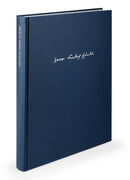| 作曲者 | George Frideric Handel (1685-1759)・ジョージ・フリデリック・ヘンデル |
| タイトル | Israel in Egypt HWV 54(布装丁) |
| サブタイトル | Oratorio in 3 parts |
| 出版社 | Bärenreiter・ベーレンライター |
| シリーズ名 | Hallische Händel-Ausgabe; Halle Handel Edition (HHA) Ser. 1. Vol. 14/1+2 |
| 楽器編成 | Solos, Mixed Choir, Orchestra |
| 楽器編成(詳細) | 2SSolo/2ASolo/TSolo/2BSolo/2Mixed choir-SATB/2Ob/2bassoon/2Trp/3trombone/timpani/Str/Bc |
| 品番 | 9790006495818 |
| 校訂者 | Annette Landgraf |
| 難易度 | 中上級 |
| 言語 | 英語 |
| 形状 | LII, 410/IX, 207 ページ・30.0 x 26.5 cm・3532 g・布装丁 |
| 出版年 | 2017年第2刷 |
| 出版番号 | BA 4063 |
| ISMN | 979-0006495818 |
The distinguishing feature of our new edition is that it reproduces Israel in Egypt in its complete three-part form: The Lamentation of the Israelites for the Death of Joseph, Exodus and Moses' Song. It was in this form that the work was given at its London premiere on 4 April 1739.
Handel made extensive changes for the second performance. The reason is often said to have been the audience's dissatisfaction with the work's unusual design. However, he may possibly only have wanted to satisfy the whims of a soprano who felt under-represented with solo material.
Israel in Egypt is made up of a series of contrasting and artfully constructed choruses separated only by a few numbers for solo voice. Part 1 is entirely given to the chorus, Part 2 largely so, and Part 3, while containing most of the solo numbers, still gives ample room to the chorus. Handel shortened several choral numbers and may have taken the opportunity to alter the opening of Exodus. He also added five arias and a recitative for the soprano Elisabeth Duparc. These arias had already been written for insertion in other works of the 1730s, and two of them had been sung a short while previously in An Oratorio (1738). There is no libretto containing the changes introduced at the second performance. All the insert arias are reproduced in Appendix 1 of Volume I/14 of the complete edition.
The next performance of the piece did not occur until 1756. Handel now compiled an entirely new Part 1 containing a balanced proportion of choral and solo numbers by selecting items from Solomon, the Occasional Oratorio and the Peace Anthem. The two other parts retained their original form, apart from a few cuts in the choruses and the addition in Part 3 of the aria 'Hope, hope a pure and lasting treasure' from the second version of Esther (for both 1756 and 1757) and the aria 'Toss'd from thought to thought' from Alexander Balus (for 1757).
Our new edition makes it possible for the first time to perform Israel in Egypt in three different versions: that of the premiere, that of the second performance, and the late version with new Part 1. Moreover, all cuts and deletions noted in the autograph manuscript or conductor's score have been reincorporated, even those that cannot be attributed to any of the above-mentioned performances. Thus conductors wishing to shorten the performance can now avail themselves of historically sanctioned cuts. Detailed notes in the main body of the music and a summary in the preface provide the reader with an overview of the various versions.



